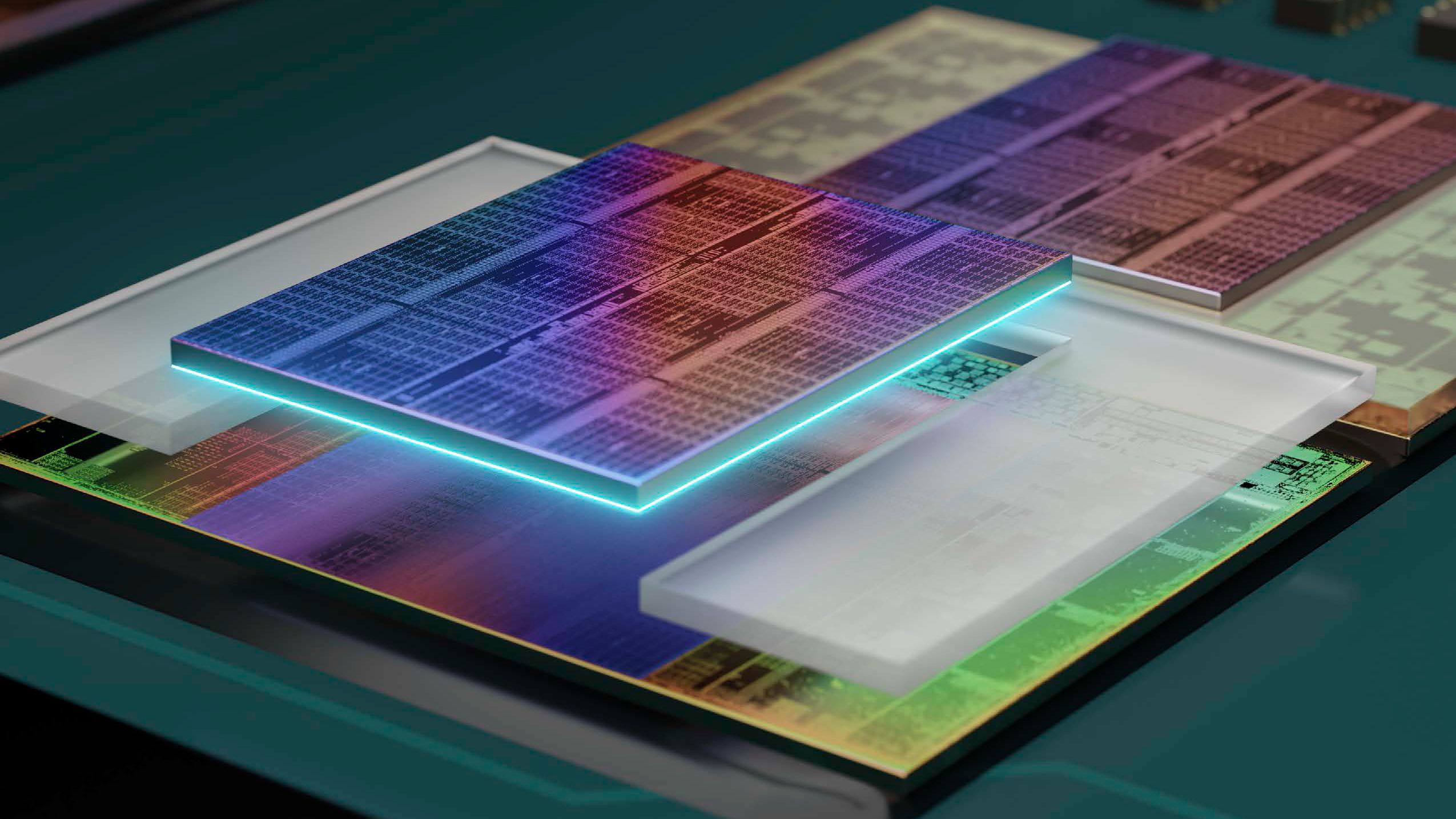
AMD GPU Appears to Leave Room for Future 3D V-Cache
Semiconductor engineer Tom Wassick has discovered what he believes to be 3D V-Cache functionality on one of AMD’s best GPUs, the RX 7900 XT. The engineer took a peak inside the 7900 XT’s die with an electron microscope and found the same 3D V-Cache connection points used on AMD’s Zen 3 architecture.
Wassick cannot say if these connection points will be used for caching purposes specifically, but AMD has made no known plans to expand its 3D packaging capabilities beyond vertically stacked cache at this point. That makes it seem like these connection points will be used with some sort of 3D cache in mind to increase gaming performance and/or compute performance.
3D V-Cache has been used to great success on AMD’s Ryzen and EPYC CPUs so far. The technology relies on a hybrid bonding technique that fuses an additional 64MB slab of cache on top of a Ryzen or EPYC compute die to increase L3 cache capacity. Currently this 3D stacking technique has allowed AMD to double the amount of L3 cache available to its desktop Ryzen 9 7900X3D and 7950X3D parts, while tripling it on its Ryzen 7 5800X3D, 7800X3D chips and EPYC Milan-X server processors.
The performance benefits from this technology have been impressive, with 3D-V-Cache chips gaining a full generational increase in performance in applications that benefit heavily from large chunks of cache. A good example of this is with the Ryzen 7 5800X3D where we saw a 28% uplift in gaming performance against the Ryzen 9 5900X, and 7% faster performance than the Core i9-12900KS.
AMD’s server counterparts are even more impressive, with Milan-X benchmarks from AMD and Microsoft showing performance improvements of well over 50% against standard Milan parts. However, this technology can’t magically increase performance at will. Only cache sensitive workloads will see this type of behavior.
What else can you see? A linear array of “spots” that look remarkably like the keep out zones on X3D, and that are on the same 17-18 um pitch. Could they be considering stacked MCD functionality (or maybe they’re something else)?January 27, 2023
We have no idea how 3D V-Cache would operate in a GPU application. But in theory the main principles of 3D V-Cache should still apply. Having more cache capacity would enable faster processing of cache sensitive workloads, since the GPU has to make less trips to its slower GDDR6 memory.
We’ve already seen a good example of this with AMD’s Infinity Cache in the RX 6000 series where AMD was able to use slower GDDR6 memory and retain the same performance as Nvidia’s RTX 30 series GPUs, featuring power-hungry GDDR6X memory, thanks to that infinity cache keeping the GPU fed with data.
However, we don’t know if the same behaviors will apply with 3D V-Cache. This will all depend on how sensitive AMD’s GPU architectures are to additional cache capacity, and how many applications will benefit.
Another problem AMD will have to deal with is thermals. We’ve seen this issue extensively on AMD’s Ryzen X3D processors, where the additional slab of cache hinders the thermal effectiveness of the IHS, resulting in lower CPU frequencies and higher temperatures at the same time (in comparison to a non-X3D part). There’s a high likelihood AMD would deal with the same issues on 3D V-Cache GPUs, and be forced to reduce clock speeds to keep temperatures in check.
Nonetheless, its cool to see AMD possibly looking into the idea of adding 3D-Vache to its GPUs. We could be looking at AMD’s next silver bullet, to “magically” increase gaming performance.

